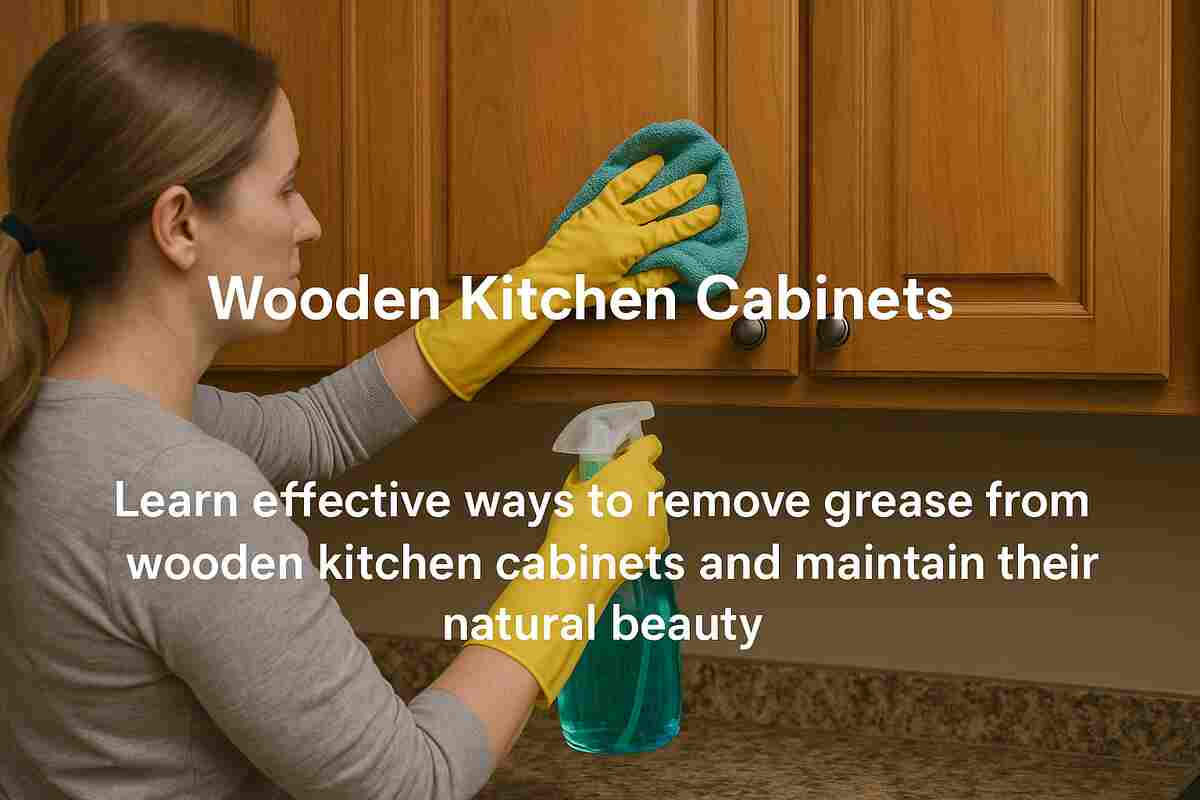Effective Techniques to Clean and Maintain Your Wooden Kitchen Cabinets
Do you have a sticky layer of kitchen grease that is hiding away your beautiful wood cabinets? It begins with an ardent sizzle, a gentle stir, and a tasty smell; however, what you can not see is that on the backside, plenty of grease is amassing on your beautiful wood cupboards. This was probably a common issue with you, in case you are the type of person who likes home-cooked meals. The cooking vapours and the oily particles mix with the air and eventually deposit on surfaces until clean cabinets transform into ugly, sticky cabinets. However, there is nothing to be alarmed about replacing them or hurling some harsh chemicals at them.
A couple of pieces of hardware in your house and some special tricks allow you to bring the natural look back to your cabinets and have a clean living room friendly kitchen. Feel like giving the shine? Here, we will take you through nine effective steps in order to get the cooking grease off your wooden cabinets safely and efficiently.
1. Learn What Kitchen Grease Is Made Of
Kitchen grease does not come over night, according to bond cleaners in brisbane. That is due to oil, food particles and moisture accumulation on adjacent surfaces during cooking. In the course of time, this residue becomes tough, and it collects dust, forming a sticky patch which is particularly sticky on the stove area. Cabinets made of wood, as a porous material, are likely to keep this debris and will be difficult to clean with a piece of cloth or water.
That is why the buildup is important, so that you can know the right method. The strategy that you set to clean it must eliminate the grime, but at the same time be gentle with the finish on the wood.
2. Pick up the Correct Cleaning Tools and Materials
To get rid of grease, you will need a source of warm water, dish soap to cut grease, white vinegar, baking soda, microfiber rags and a soft toothbrush. These are wood-friendly and low-cost house necessities. To clean this even further, simply apply a pinch of olive oil or lemon to shine it.
3. Begin by Using Dish Soap and Warm Water
Most of the time, warm water mixed with dish soap does the job to eliminate light to moderate grease. Pour some warm water into a bowl or a spray case and put in two drops of dishwashing detergent. Put the mixture into a container, dip your microfiber cloth into it, squeeze it out, and begin cleaning the surface of the cabinet.
Scratching is forbidden; replace it with a circle motion and a light touch. Once the grease has been loosened, wipe it with a clean and dry cloth so as to remove residues of the soap. Use a towel to dry the spot so as to avoid water spots or damage to the wood.
4. More Stubborn Grease on Vinegar
White vinegar is an excellent natural degreaser, ass it cleans sticky residue well. Take a spray bottle and mix hot water and white vinegar in a proportion of 1:1. Wet the solution directly onto the greasy cabinet surface and leave it to dry up for 2-3 minutes.
Scrub then using a soft cloth or a sponge. Best done by wiping with a damp cloth afterwards to clear off any traces of the solution, and then drying. Most finishes will be safe to vinegar; however, test a small area first in the case of antique cabinets, or cabinets that have not been treated.
5. A Baking Soda Paste on a Heavy Build-Up
To clean a dirty cabinet, in case yours has not been cleaned in a long time, you might require a more specific remedy. Baking soda is an oft scrub and suitable for dealing with heavy grease. Blend a tablespoon of baking soda and a little water to make a paste.
Put on the greasy spots with the paste and leave it for a few minutes. Then, scrub lightly with either a cloth or a soft toothbrush. Take care not to scrub hard enough that one scratches the finish. Wipe with a wet cloth and dry.
6. Attention to Grooves, Knobs and Handles
Such areas as cabinet grooves, handles, and corners tend to collect more grease as compared to a flat surface. These hard-to-reach areas require a toothbrush with which you can use your cleaning solution or create a paste of baking soda to clean.
Handle tenderly the edges and the hardware. Clean and then again clean with a damp cloth so that there would be no residue, and also should dry so that moisture does not damage the bottle.
7. Never Forget to Rinse and Dry the Cabinets
Once clean, rinsing your cabinets is a good thing to do to avoid residues of cleaning materials. Once cleaned, wipe them off with a wet, clean cloth. A dry microfiber towel can be used as a follow-up to avoid streaks or the absorption of moisture.
This will assist in retaining the finish in the wood since your cabinets will be without grease and without a spot.
8. Polish with Olive Oil or Lemon Polish
In order to make your cabinets shine with a new look, combine one cup of olive oil and two cups of vinegar or lemon juice. Just rub this homemade polish on a cloth and your cabinets with on and use circular motions to rub.
This not only makes it shiny, but it also adds a light protective layer which prevents dust and grease. You do not want to go overboard with that; a little bit can get you far.
Conclusion
Greasing of wood cabinets cannot be avoided during cooking, although this does not necessarily have to be the case. Equipment with the help of which you can raise years of accumulation and show once again the real beauty of your kitchen, a little patience and soft procedures will help you forget about various mantels.
Use these simple steps and maintain them on regularly your wood cabinets will be happy with you, not only that they will be shiny, but also that they will live longer and have a beautiful look. For professional help, check out affordable cleaning services.


